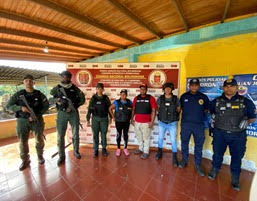SENASA (National Service for Agro-Food Health and Quality) reported that, after analyzing nine samples from backyard birds suspected of bird flufour cases were positive.
In this way, cases of influenza They amount to 24 in the national territory, since the first contagion of the virus was detected on February 16. bird flu. So far the affected provinces are: Córdoba, Buenos Aires, Santa Fe, Jujuy, Neuquén, Río Negro, San Luis and Salta.
The last four cases of bird flu were detected in Córdoba, with this the province adds 13 infections. The second province with the most cases is Buenos Aires with four detections, in the rest of the districts there is one registered case, with the exception of Santa Fe, which has two.
To prevent the virus from spreading, SENASA carries out raking work in the affected areas, reinforced health security controls at the borders, and adopted other provisions to prevent the disease from reaching the production chain.

Meanwhile, from the Ministry of Health they explained that influenza is not transmitted by the consumption of eggs, chicken or their derivatives, and issued a series of recommendations to prevent the virus from affecting people, which is rare.
In the case of Argentina in particular, since the disease was detected, studies were carried out on 14 people (11 adults and 3 minors) who had been in contact with infected animals, none of which turned out to be a positive case.

Despite the fact that the virus has not reached humans in the country, on February 22, the death of a child under 11 years of age was recorded in Cambodia, after contracting influenza. The girl presented symptoms such as high fever, cough and sore throat since February 16, and when she did not improve, she was transferred to the children’s hospital in the capital, Phnom Penh, on February 21, where she died the next day.
What does the WHO say about bird flu?
Although it is rare that the virus is transmitted to humans, there is great concern on the part of the health authorities due to the increase in cases in animals worldwide.

In this regard, the WHO (World Health Organization) pointed out that “whenever avian influenza viruses circulate among birds, there is a risk of sporadic appearance of human cases”, for which prevention measures must be maximized.
They also point out that despite the risk, “Community-level spread is considered unlikely as, according to available information, this virus has not acquired the ability to be easily transmitted between humans”.


















